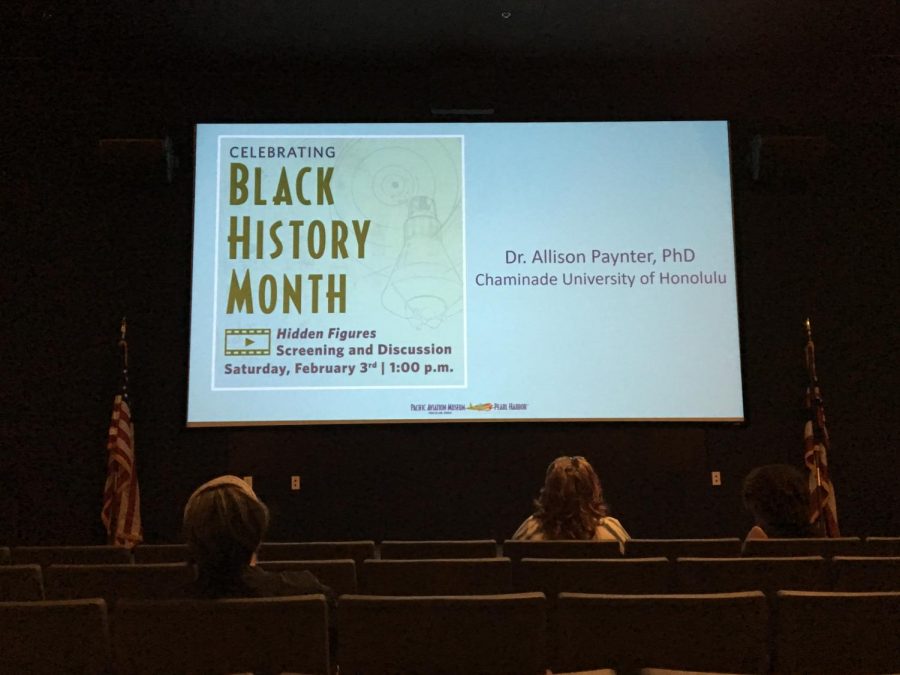Pacific Aviation Museum Welcomes Community, CUH Professor to Celebrate Black History Month
In celebration of Black History Month, a screening of “Hidden Figures” (2016) was held in the Pacific Aviation Museum Pearl Harbor theater and was followed by an audience discussion led by Chaminade University of Honolulu English professor Dr. Allison Paynter.
In celebration of Black History Month, families, academics, and community members gathered to reflect on the accomplishments of three formerly unknown, female African-American mathematicians and their vital contribution to advance America in the Space Race.
A screening of “Hidden Figures” (2016) was held in the Pacific Aviation Museum Pearl Harbor theater and was followed by an audience discussion led by Chaminade University of Honolulu English professor Dr. Allison Paynter. The community event that took place on Saturday, Feb. 3, was hosted by the museum’s Education Department, which honors Black History Month annually. Roughly a dozen audience members attended this year’s screening and discussion.
“We’re still uncovering pieces to all of our puzzles as academics, as women, as ethnic groups that our history just gets richer and richer,” Paynter said in an interview prior to the screening. “I do love that about scholarship and research in academia.”
Even as an active member of academia for more than 20 years and a scholar of women’s studies, gender, and ethnicity, Paynter was unaware of this particular story until seeing the film sparked her personal research.
The film “Hidden Figures,” based on the non-fiction book by Margot Lee Shetterly, reveals the contributions of Katherine Johnson, Dorothy Vaughan, and Mary Jackson when they were NASA employees in the early 1960s. Each woman faced challenges due to their race and gender but ultimately overcame them and played critical roles in successfully sending John Glenn into orbit and bringing him back safely, a precursor to putting a man on the moon. Their accomplishments failed to exist as public knowledge up until the 2016 release of both the non-fiction book and loosely non-fiction film, which altered some of the history and took artistic liberties.
“Watching a movie is something audiences of any age can do, and sometimes it’s easier to build a personal connection to a time period or historical event through a film versus an exhibit,” said Kiyana Higa, 25-year-old film screening attendee.
Hoping for a robust conversation following the screening, Paynter received a variety of questions from community members young and old about the accuracy of the film, parallels between the struggles of the women and that of underrepresented demographics today, and other contributions that the women continued to make over the course of their careers.
“I think studying African-American history, Asian-American history – especially in Hawaii Pacific Studies – should be part of our daily or weekly curriculum,” Paynter said in the pre-screening interview. “It shouldn’t be relegated to one specific time period. But we need this. We need this social awareness, this literary awareness, this historical awareness, and we do need a tradition of honoring those that have come before us.”
Paynter became connected with the Pacific Aviation Museum Pearl Harbor Education Department through a shared contact at the Hawaii Council for the Humanities. She hopes that through this recent partnership and the small academic community in Hawaii, she and Chaminade will be able to continue its relationship with the museum in the future by participating in other educational events.
“I think part of me would like us to celebrate ethnic groups and gender identity all the time and not have to devote an entire block of time and then forget about it,” she said. “… I do want us to spread this out so that this becomes normal for us to celebrate all the achievements of all people.”
